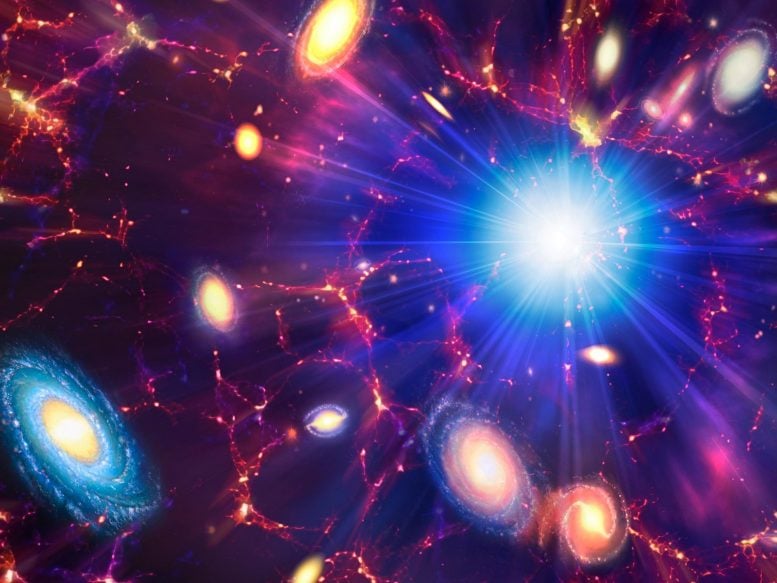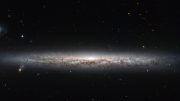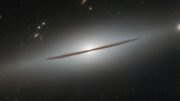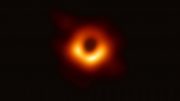
The final theory of the origin of the universe from the late Professor Stephen Hawking, developed in collaboration with Professor Thomas Hertog from KU Leuven, argues against the traditional account of eternal inflation, proposing a simpler and finite universe.
Stephen Hawking’s final research, developed with Thomas Hertog and published in 2018, challenges the conventional Big Bang theory by suggesting the universe is finite and simpler than previously thought. Based on string theory and holography, their work argues against the idea of an eternally inflating, fractal universe, proposing instead that the universe has a more uniform, finite structure. They refuted the notion of a multiverse with infinite variations, making the theory more testable through potential observations of primordial gravitational waves by future space telescopes.
Professor Stephen Hawking’s final theory on the origin of the universe, which he worked on in collaboration with Professor Thomas Hertog from KU Leuven, was published in 2018 in the Journal of High Energy Physics.
The theory, which was submitted for publication before Hawking’s death earlier in 2018, is based on string theory and predicts the universe is finite and far simpler than many current theories about the Big Bang say.
Professor Hertog, whose work has been supported by the European Research Council, first announced the new theory at a conference at the University of Cambridge in July 2017, organized on the occasion of Professor Hawking’s 75th birthday.
Modern theories of the Big Bang predict that our local universe came into existence with a brief burst of inflation — in other words, a tiny fraction of a second after the Big Bang itself, the universe expanded at an exponential rate. It is widely believed, however, that once inflation starts, there are regions where it never stops. It is thought that quantum effects can keep inflation going forever in some regions of the universe so that globally, inflation is eternal. The observable part of our universe would then be just a hospitable pocket universe, a region in which inflation has ended and stars and galaxies formed.
“The usual theory of eternal inflation predicts that globally our universe is like an infinite fractal, with a mosaic of different pocket universes, separated by an inflating ocean,” said Hawking in an interview in 2017. “The local laws of physics and chemistry can differ from one pocket universe to another, which together would form a multiverse. But I have never been a fan of the multiverse. If the scale of different universes in the multiverse is large or infinite the theory can’t be tested. ”
In their paper, Hawking and Hertog say this account of eternal inflation as a theory of the Big Bang is wrong. “The problem with the usual account of eternal inflation is that it assumes an existing background universe that evolves according to Einstein’s theory of general relativity and treats the quantum effects as small fluctuations around this,” said Hertog. “However, the dynamics of eternal inflation wipes out the separation between classical and quantum physics. As a consequence, Einstein’s theory breaks down in eternal inflation.”
“We predict that our universe, on the largest scales, is reasonably smooth and globally finite. So it is not a fractal structure,” said Hawking.
The theory of eternal inflation that Hawking and Hertog put forward is based on string theory: a branch of theoretical physics that attempts to reconcile gravity and general relativity with quantum physics, in part by describing the fundamental constituents of the universe as tiny vibrating strings. Their approach uses the string theory concept of holography, which postulates that the universe is a large and complex hologram: physical reality in certain 3D spaces can be mathematically reduced to 2D projections on a surface.
Hawking and Hertog developed a variation of this concept of holography to project out the time dimension in eternal inflation. This enabled them to describe eternal inflation without having to rely on Einstein’s theory. In the new theory, eternal inflation is reduced to a timeless state defined on a spatial surface at the beginning of time.
“When we trace the evolution of our universe backwards in time, at some point we arrive at the threshold of eternal inflation, where our familiar notion of time ceases to have any meaning,” said Hertog.
Hawking’s earlier ‘no boundary theory’ predicted that if you go back in time to the beginning of the universe, the universe shrinks and closes off like a sphere, but this new theory represents a step away from the earlier work. “Now we’re saying that there is a boundary in our past,” said Hertog.
Hertog and Hawking used their new theory to derive more reliable predictions about the global structure of the universe. They predicted the universe that emerges from eternal inflation on the past boundary is finite and far simpler than the infinite fractal structure predicted by the old theory of eternal inflation.
Their results, if confirmed by further work, would have far-reaching implications for the multiverse paradigm. “We are not down to a single, unique universe, but our findings imply a significant reduction of the multiverse, to a much smaller range of possible universes,” said Hawking.
This makes the theory more predictive and testable.
Hertog now plans to study the implications of the new theory on smaller scales that are within reach of our space telescopes. He believes that primordial gravitational waves — ripples in spacetime — generated at the exit from eternal inflation constitute the most promising “smoking gun” to test the model. The expansion of our universe since the beginning means such gravitational waves would have very long wavelengths, outside the range of the current LIGO detectors. But they might be heard by the planned European space-based gravitational wave observatory, LISA, or seen in future experiments measuring the cosmic microwave background.
Reference: “A smooth exit from eternal inflation?” by S. W. Hawking and Thomas Hertog, 27 April 2018, Journal of High Energy Physics.
DOI: 10.1007/JHEP04(2018)147









So the big crunch theory is out? Did the Universe create itself as the late Steven Hawking alleges ? Aren’t people part of that Universe ? Can anyone point in the direction of the universe where the Big Bang occurred? If the universe is falling – we could have inflation, if it is falling into other multiverses or a falling static gravity vacuum field? This improved theory or this article did not mention near absolute zero black holes, what happens to them? I have been looking for noticed anomalies that happen before an experiment – odd flashing or sparks of light or unexplained action just before an experiment – then the experiment occurs. Maybe the experiment tests cold magnetic fields or creates higgs mouns anything as it could prove a particle could go back in time not there is nothing, maybe Hawking is correct that nothing can go back in time ( to start motion ? )
There is no taker of either no boundry or with boundry universe as propounded by Hawkins.Relativity breaks down at the begining of universe is known to all.Hawkins tried to found a new theory of Quantum gravity but his shifting stand resulted in uttr confusion.Penrose has propounded Cyclic universe.The universe is not self created.Days of Wheeler and Hawkins are over.We are not the final target of evolution.But at least we know that Something from something.At we are certain that a Designer is playing his card close to his chaste.